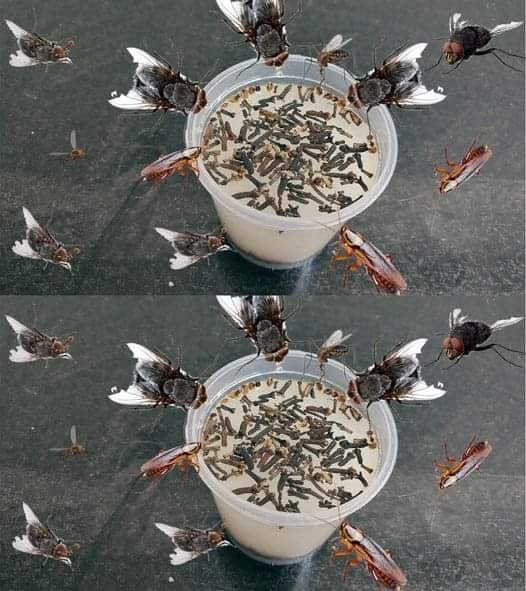Ants are attracted to food particles and sugary residues. Keeping your home clean is essential for prevention.
Steps:
- Sweep and Mop:
- Regularly sweep and mop floors to remove crumbs and sticky residues.
- Wipe Surfaces:
- Use a mixture of water and vinegar or a mild detergent to clean countertops, tables, and other surfaces.
- Seal Food:
- Store food in airtight containers and ensure pet food bowls are cleaned after use.
Cleanliness eliminates the food sources that encourage ants to invade.
3. Seal Entry Points
Blocking the ants' access into your home is a key step in prevention.
Steps:
- Inspect Your Home:
- Look for cracks in walls, gaps around windows and doors, and spaces around utility lines.
- Seal Openings:
- Use caulk or silicone sealant to close cracks and gaps.
- Install weather stripping around doors and windows.
- Screen Vents:
- Ensure that vents and drains are covered with fine mesh screens.
Sealing entry points prevents ants from infiltrating your living space.
4. Use Natural Deterrents
Certain natural substances can repel ants effectively without using harsh chemicals.
Steps:
- Vinegar Spray:
- Mix equal parts water and white vinegar in a spray bottle.
- Spray the mixture along ant trails, entry points, and potential nesting areas.
- Lemon Juice:
- Squeeze fresh lemon juice near entry points and wipe the surfaces.
- The acidic smell disrupts their scent trails.
- Essential Oils:
- Dab peppermint, tea tree, or citrus essential oil around windows, doors, and cracks.
These natural deterrents disrupt the ants' ability to navigate and discourage them from entering.
5. Set Up Ant Traps
Ant traps are an effective way to eliminate ants that have already infiltrated your home.
Steps:
- Choose the Right Trap:
- Opt for bait traps that contain borax or other ant-killing ingredients.
- Place Strategically:
- Set traps near entry points and along ant trails.
- Monitor and Replace:
- Check the traps regularly and replace them as needed.
Ant traps target the entire colony by allowing worker ants to carry the poison back to the nest.
6. Create Barriers
Physical and chemical barriers can stop ants from crossing into your home.
Steps:
- Chalk or Baby Powder:
- Draw chalk lines or sprinkle baby powder around entry points. The fine particles disrupt their movements.
- Cinnamon or Cayenne Pepper:
- Sprinkle these spices along windowsills, doorways, and cracks.
- Diatomaceous Earth:
- Spread food-grade diatomaceous earth around entry points. This natural powder damages their exoskeletons.
Barriers create a hostile environment that ants prefer to avoid.
7. Remove Outdoor Attractants
Ants often enter homes from outdoor nests, so managing your exterior environment is crucial.
Steps:
- Trim Vegetation:
- Keep plants, shrubs, and trees trimmed away from your house to reduce pathways for ants.
- Clear Debris:
- Remove wood piles, leaves, and other debris near your home where ants might nest.
- Secure Trash:
- Ensure trash bins have tight-fitting lids and are kept clean.
Minimizing outdoor attractants reduces the likelihood of ants migrating indoors.
8. Call a Professional (If Necessary)
If the infestation persists despite your efforts, it might be time to call in a pest control expert.
Steps:
- Research Pest Control Services:
- Look for licensed and experienced pest control companies.
- Schedule an Inspection:
- Allow the professional to assess the infestation and recommend solutions.
- Follow Their Advice:
- Implement their suggestions for long-term prevention.
Professionals have access to advanced tools and treatments for severe infestations.
Final Thoughts
Dealing with ants in the house requires a combination of vigilance, cleanliness, and targeted solutions. By following these eight steps, you can effectively discourage ants from invading your home and maintain a pest-free environment. Remember, consistency is key—stay proactive to ensure your home remains an unwelcoming place for these tiny invaders.






